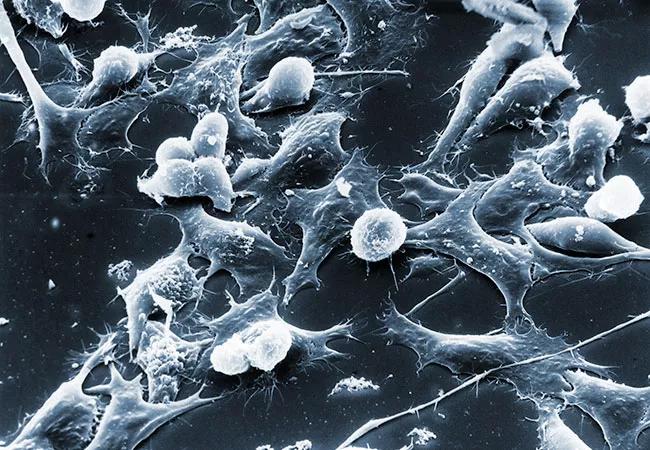Urine prohibitin identified as a prognostic biomarker in Wilms’ tumor

Significantly elevated levels of urine prohibitin were found in patients with relapsed compared to cured Wilms’ tumor, according to a recent study published in JCI Insight. Furthermore, overexpression of tumor prohibitin was associated with resistance to chemotherapy drugs and attributed to prohibitin-mediated blockade of intrinsic mitochondrial apoptosis. The study was conducted by a group of researchers from several national children’s hospitals and medical centers.
Advertisement
Cleveland Clinic is a non-profit academic medical center. Advertising on our site helps support our mission. We do not endorse non-Cleveland Clinic products or services. Policy
These latest findings shed new light on the role of prohibitin in Wilms’ tumor and point to its potential role as a prognostic marker and therapeutic target in this common type of childhood kidney cancer, says Stacey Zahler, DO, a pediatric hematologist/oncologist with Cleveland Clinic Children’s.
“Up until now we haven’t had a simple tumor biomarker for Wilms’ tumor,” she says. “This study very eloquently describes how prohibitin is significantly more expressed in patients with Wilms’ tumor compared to normal controls, and could help determine risk of relapse…and this is quite exciting. The fact that prohibitin could indicate the tumor may be resistant to conventional therapy is also a very important finding.”
Dr. Zahler explains that Wilms’ tumor is the most common type of kidney cancer in children, accounting for about 5% of all pediatric cancers and approximately 85% of pediatric kidney cancers. It is also one of the most curable malignant solid tumors in pediatric patients.
“The pediatric oncology field has done an amazing job in not only tailoring therapy to cure a lot of Wilms’ tumor patients, but also in curing relapsed patients with favorable-histology tumors,” she says and notes that patients who complete treatment for Wilms’ tumor have to be under continued surveillance and regularly undergo follow-up imaging. Until now, continued remission has been established using imaging techniques only, she adds.
In the current study, researchers utilized high-resolution mass spectrometry to profile urine proteomes of patients with several types of childhood kidney tumors and age-matched healthy controls. Urine specimens of 16 patients with favorable-histology Wilms’ tumor, six patients with rhabdoid tumor of the kidney, nine patients with clear cell sarcoma of the kidney, two patients with renal cell carcinoma and 16 healthy controls were included in the analysis.
Advertisement
A total of 6,520 urine proteins were identified using mass spectrometric analysis. The median concentration of prohibitin in diagnostic urine specimens, as determined by enzyme-linked immunosorbent assay (ELISA), was found to be significantly higher in patients who relapsed (1,672 ng/mL) compared to the patients who were ultimately cured (131 ng/mL) or age-matched controls (218 ng/mL). Based on these findings, elevated urinary prohibitin at diagnosis was identified as a prognostic biomarker of relapse.
“[This study has shown that] urine prohibitin can be a very effective added tool in predicting how likely the patients who have completed therapy for Wilms’ tumor are to relapse,” says Dr. Zahler. “What has not been worked out yet is: 1) making this test available in commercial laboratories, and 2) what do we do with those patients who have high levels of urine prohibitin yet clean imaging studies after therapy.”
Study findings have also shown that overexpression of prohibitin in tumor tissues is associated with Wilms’ tumor disease stage. Using additional functional genetic testing, researchers found that prohibitin overexpression blocks intrinsic mitochondrial apoptosis and induces resistance to chemotherapy drugs commonly used to treat Wilms’ tumor.
Dr. Zahler notes that these latest findings will likely open several new avenues of research. Clinical trials are needed to establish the exact cut-off value of urine prohibitin concentration that would be indicative of Wilms’ tumor relapse, she says.
Advertisement
“In this article, the researchers use 998 ng/mL [urine prohibitin] as the cut-off, because that was the number that was statistically significantly associated with relapse,” she says. “If you look at normal controls (the patients who never had a kidney tumor), or those who were cured of Wilms’ tumor and were not going to relapse, these patients had levels in the 100-200 ng/mL range, while the patients who ultimately relapsed had levels in the thousands. So, that is a significant difference…but I do not know that we can say that 998 ng/mL should be the established cut-off based on this study alone.”
She further notes that the current study identified another interesting protein — DACT2 — in the urine of patients with Wilms’ tumor; however, the relevance of this protein has not yet been established and it is not currently used as a prognostic biomarker in Wilms’ tumor.
“It seems that DACT2 was even more significantly expressed in patients both at diagnosis and relapse,” she says. “It would be very interesting to study this protein, although there are currently no ELISA tests to look for antibodies against DACT2 in the laboratory.”
She also believes that the findings pointing to the role of prohibitin in inducing resistance to chemotherapy will likely lead to additional studies focused on targeting prohibitin as a new therapeutic strategy for Wilms’ tumor.
Image attribution: Dr. Timothy Triche, National Cancer Institute.
Advertisement
Advertisement

Large retrospective study suggests DOACs are safe, effective alternative to low-molecular-weight heparin in complex patient population

Care paths and research initiatives aim to answer unmet clinical needs

Study shows high rate of hematologic responses, low rate of disease progression

Bispecific antibody bridging therapy deepens durability of BCMA CAR T-cell therapy without overlapping toxicities in patients with relapsed/refractory multiple myeloma

Phase 2 study brings pivotal advances in treatment efficacy and safety for the most challenging-to-treat population

Patient with quadruple refractory multiple myeloma achieves complete response with cell therapy

Distinct baseline immune profiles can predict response and resistance to different types of CAR-T cells.

National Blood Clot Alliance collaborates with faith-based organizations on first-of-its-kind church bus tour